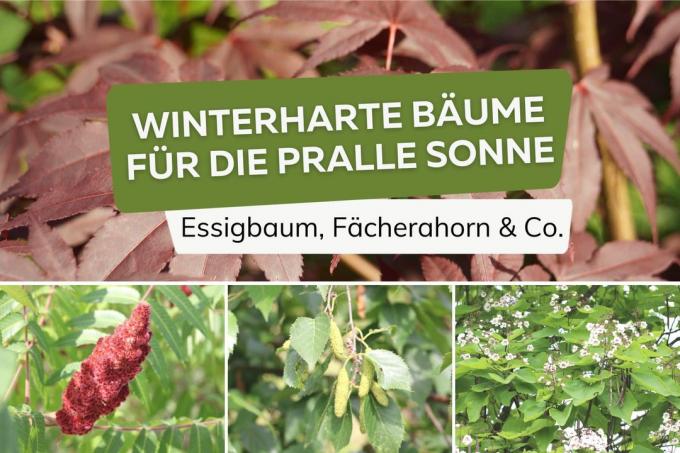
A location in full sun is usually not a suitable place for most trees and shrubs. Nevertheless, we have found 15 hardy trees for you here, which tolerate the blazing sun very well due to their need for light and their tolerance to heat.
In a nutshell
- blazing sun is particularly advantageous for flowering trees
- The list includes classics such as hawthorn or silver birch as well as exotic species such as honey locust
- Winter hardiness in some trees only with increasing age
- Trees for blazing sun always very heat tolerant
Table of contents
- Hardy trees for full sun from A to B
- From E to F
- From H to O
- From R to T
- frequently asked Questions
Hardy trees for full sun from A to B
American honey locust 'Sunburst' (Gleditsia triacanthos)
Its initially golden leaves, which turn yellow-green with age, give the sun-loving small tree "American Gold-Gleditschie", as it is also called, a tall one decorative value.
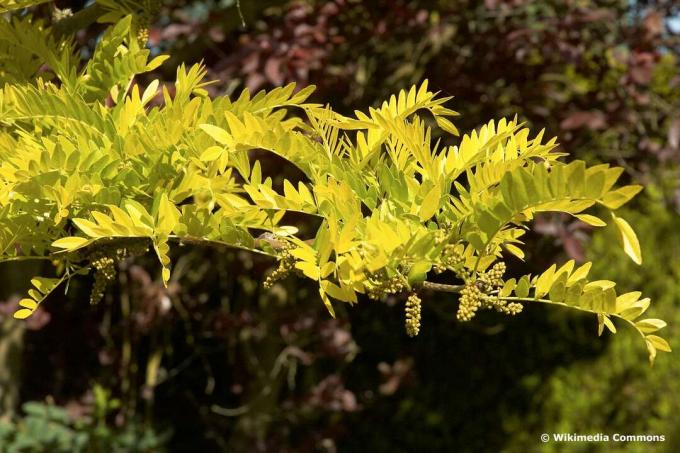
- Growth height: between 800 and 1000 centimeters
- Flowers: white, racemose, June
- Soil: moist, nutritious
- Special features: very hardy down to -28.8 degrees Celsius; deciduous; autumn coloring; Good drought tolerant and flood tolerant
American yellowwood (Cladrastis kentukea)
The American yellowwood is a scented tree that is characterized by its yellow wood and its white flowers great color accents in garden beds and is also suitable for container cultivation.

- growth height: between 1000 and 1500 centimeters; rarely up to 2500 centimeters
- Flowers: white, racemose, May to June
- Soil: normal, deep
- Special features: bright yellow to orange autumn colors, also tolerates partial shade, deciduous, friendly to bees
Tree hazel (Corylus colurna)
This early-flowering specimen is also known as "Turkish Hazel" and is ideal as a city tree because it is very robust. He is also particularly popular for his yellowish-brown catkins, which appear in early spring.

- Growth height: between 1200 and 2000 centimeters
- Flowers: green-yellow, simple, inconspicuous, February to March
- Soil: deep, likes loamy, calcareous
- Special features: conical growth; edible nuts from September; very heat tolerant; tolerates partial shade
Tip: What hardly anyone knows: the kittens already contain valuable ones between March and April pollen for all kinds of insects and should not be missing in any garden.
Bluebell tree (Paulownia tomentosa)
The early-blooming blue bell tree, often referred to as the emperor tree, impresses with its enormous inflorescences. Although it is hardy, it still needs protection from the cold in freezing temperatures.
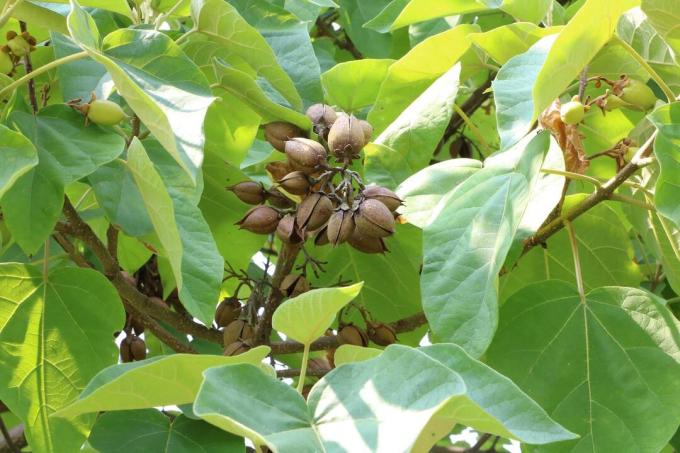
- Growth height: between 800 and 1500 centimeters
- Flowers: violet-blue, in panicles, April to May
- Soil: moderately dry to fresh, well-drained
- Specialties: deciduous; needing warmth; very heat tolerant; urban climate festival
From E to F
Hawthorn "Paul's Scarlet" (Crataegus laevigata)
This is a bird protection wood, which thrives most splendidly both as a shrub or small tree in the garden bed and in a bucket in full sun.

- Growth height: between 400 and 600 centimeters
- Flowers: carmine/dark red, double, May to June
- Soil: rich in nutrients, moderately dry to moist, slightly acidic to alkaline, likes loam and clay
- Specialties: deciduous; short thorns on shoots; very tolerant of pruning and therefore also suitable for small gardens
Sweet chestnut (Castanea sativa)
This chestnut and chestnut variety is due to the dense growth, the very aromatic chestnuts and of the strong, pleasantly scented flowers, one of the most sought-after, heat-tolerant and sun-loving chestnuts.
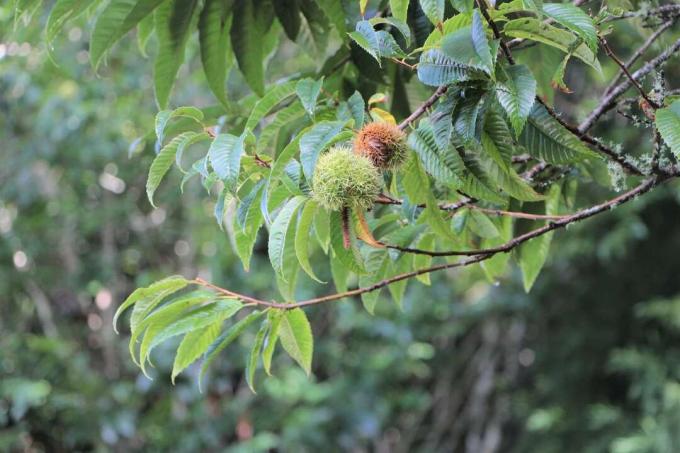
- Growth height: between 1000 and 1500 centimeters
- Flowers: white/greenish-white, June to July
- Soil: sandy-loamy, slightly acidic
- Special features: Harvest time between September and October; yellow autumn color; climate tree; bee friendly
Vinegar (Rhus typhina)
The tree, also known as stag's butt sumac, is impressive with its unusual appearance and is particularly effective as a solitary tree.

- Growth height: between 400 and 600 centimeters
- Flowers: red, in panicles, June to July
- Soil: moist to dry, permeable
- Special features: bright orange to fiery red autumn colours; red fruit cobs from July until wintertime; deciduous
Eucalyptus tree (Eucalyptus camphora)
Bring a piece of Australia into your garden with this eucalyptus tree. It is also considered one of the hardiest varieties.
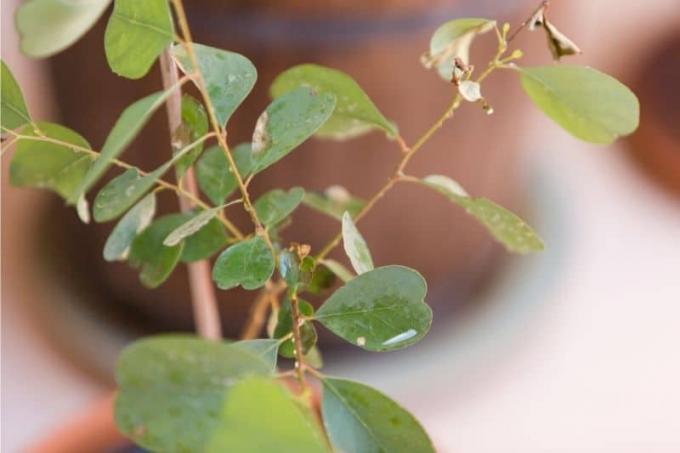
- Growth height: up to 1800 centimeters
- Flowers: white, white-cream, white-yellowish, umbels, end of September to December
- Soil: dry to fresh, sandy-gravelly or gravelly-loamy
- Special features: hardy to minus 14 degrees Celsius; evergreen; attractive silvery bluish to green foliage
Japanese maple (Acer palmatum)
The Japanese maple loves a location in full sun, but should be sheltered from the wind.

- Growth height: between 500 and 700 centimeters
- Flowers: purple, racemose, May
- Soil: well-drained, loose, fresh to moist, acidic to slightly alkaline
- Special features: depending on the variety, decorative bright orange to red autumn leaves; slow growing; deciduous; also suitable for semi-shade
From H to O
silver birch (Betula pendula)
This specimen has a high recognition value due to the white bark in old age, which is why it is also called white birch.

- Growth height: between 1500 and 2000 centimeters
- Flowers: green-yellow, cylindrical, April
- Soil: tolerates almost any soil condition
- Special features: extremely hardy; tolerates drought; deciduous; golden yellow autumn colour
Corkscrew acacia "Tortuosa" (Robinia pseudoacacia)
One of the most beautiful hardy and sun-loving corkscrew trees is the "Tortuosa" variety, which rarely flowers, but is very decorative even without flowers thanks to the bizarrely twisted shoots.

- Growth height: between 800 and 1200 centimeters
- Flowers: white, in racemes, end of May to beginning of June
- Soil: fresh, loose, nutritious
- Special features: flowers strongly scented; very heat tolerant
Olive tree (Olea europaea)
This Mediterranean tree loves full sun, but most varieties are only down to minus five degrees Celsius hardy, which is why protection against the cold is essential in our latitudes.

- Height of growth: garden bed up to 2000 centimetres; Tubs up to 150 centimeters
- Flowers: needs cool temperatures for flowering; white or yellow, late May to late June
- Soil: permeable, loose, rich in nutrients and humus
- Special features: can become several hundred years old; varieties hardy to minus 10 degrees Celsius: "Cornicabra" and "Arbequina"; edible fruit after five years at the earliest
Tip: To prevent frost damage, it is best to cover outdoor specimens with a fleece or jute sack by the end of November at the latest. The roots are given insulating protection by spreading leaves or straw in a thick layer on the surface of the soil.
From R to T
Red flowering horse chestnut "Briotii" (Aesculus carnea)
In contrast to the sweet chestnut, the flesh-red horse chestnut is usually presented purely as an ornamental tree, in which the blazing sun ensures a lush sea of blossoms.

- Growth height: between 800 and 1200 centimeters
- flowers: blood-red, May
- Soil: normal, loose garden soil,
- Special features: fewer flowers in semi-shade; rarely fruiting; deciduous; very robust and easy to care for
Red Elder (Sambucus racemosa)
Also known as grape elder, it is particularly widespread in southern Germany and can be "trained" as a shrub or as a tree.
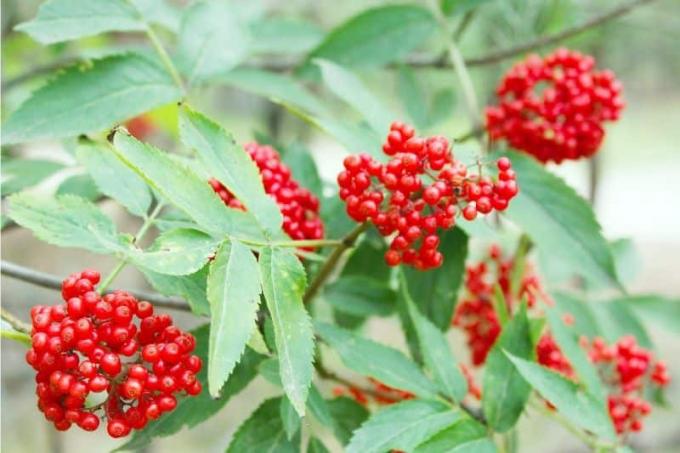
- Growth height: between 300 and 400 centimeters
- Flowers: creamy white to yellow-green, in panicles, April to May
- Soil: rich in humus, permeable, poor in lime
- Specialties: deciduous; very hardy; equally suitable for blazing sun and shady places
Trumpet tree (Catalpa bignonioides)
The easy-care trumpet tree grows best in full sun and is very popular worldwide due to its extensive blooms and decorative foliage.

- Growth height: between 1000 and 1500 centimeters
- Flowers: white, in panicles, June to July
- Soil: fresh, nutritious, tolerant of lime
- Specialties: deciduous; fewer flowers in semi-shade; straight growth; bright yellow autumn colour; young specimens need protection from the cold
frequently asked Questions
In this context, "full" stands for direct, intense and unhindered solar radiation.
Your heat-tolerant trees can get blazing sun in a south-facing location. Here the sun shines from noon until late afternoon. The western orientation also delivers blazing sun during the summer season. The sun doesn't come until the afternoon, but stays until sunset.
The blazing sun is usually associated with heat that many trees cannot tolerate. Above all, the resulting drought is causing many problems.
